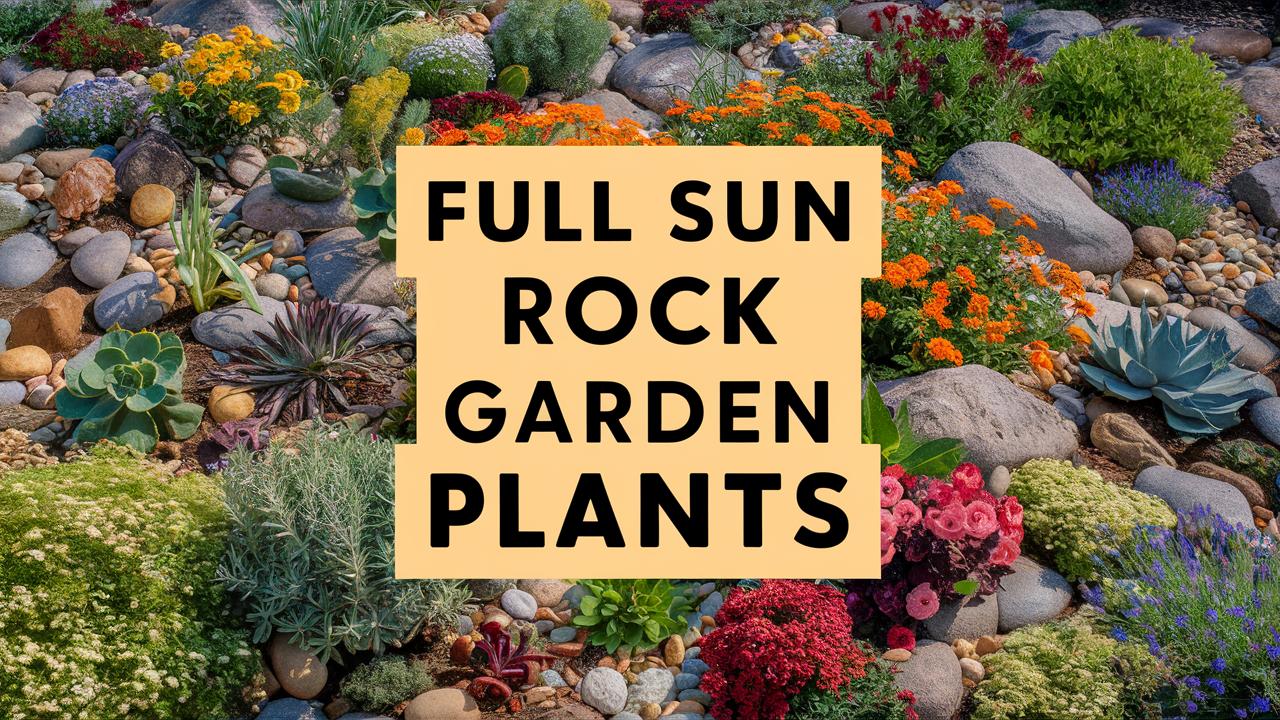In this guide, we will explore a selection of remarkable perennials and ground covers that can withstand the sun’s rays and give your garden a vibrant, lively atmosphere.
Lavender
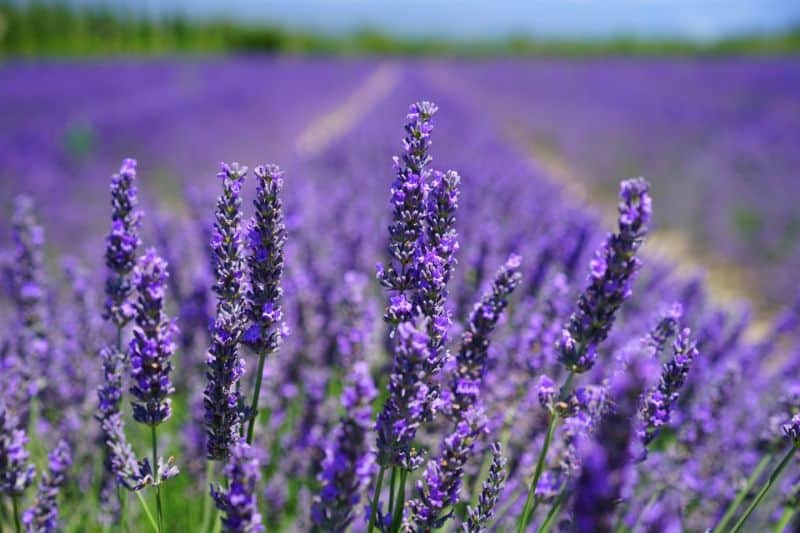
When it comes to full sun rock gardens, lavender holds a special place in the hearts of gardeners. This fragrant perennial is not only known for its beautiful purple flowers, but it also serves as an excellent pollinator attractor, drawing bees and butterflies into your garden. Lavender thrives in well-drained soils, making it ideal for rock gardens where drainage can often be a concern.
Beyond its visual appeal, lavender offers aromatic benefits and has myriad uses in cooking and cosmetics. When planting, consider positioning it at the front or middle of your rock garden, allowing its height and color to create a stunning focal point. Its low water requirements and resilience to drought make lavender a perfect choice for hot summer days, ensuring it stays vibrant without much fuss.
Sedum
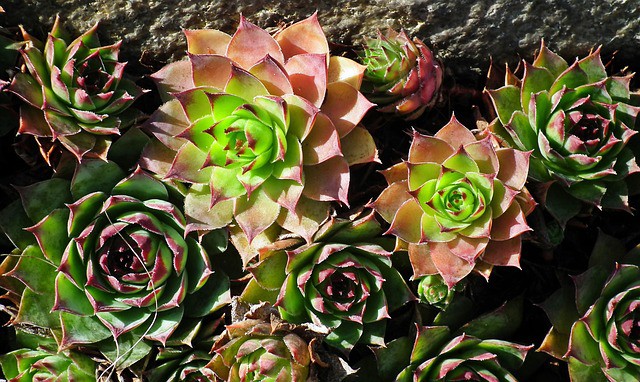
Next on our list is sedum, a succulent that comes in various shapes, sizes, and colors. With its fleshy leaves and vibrant blossoms, sedum brings an entirely new texture to rock gardens. These plants are incredibly versatile, allowing them to grow in different conditions, but they particularly shine in sunny environments.
Sedum varieties such as ‘Autumn Joy’ or ‘Stonecrop’ not only blossom beautifully in late summer to early fall but also provide fascinating autumnal color changes. For gardeners looking to embrace a low-maintenance approach, sedum’s drought resistance and ability to thrive in poor soils will be particularly appealing. Plus, their ability to spread creates a lovely ground cover that can fill in gaps and enhance the aesthetics of your rocky landscape.
Dianthus
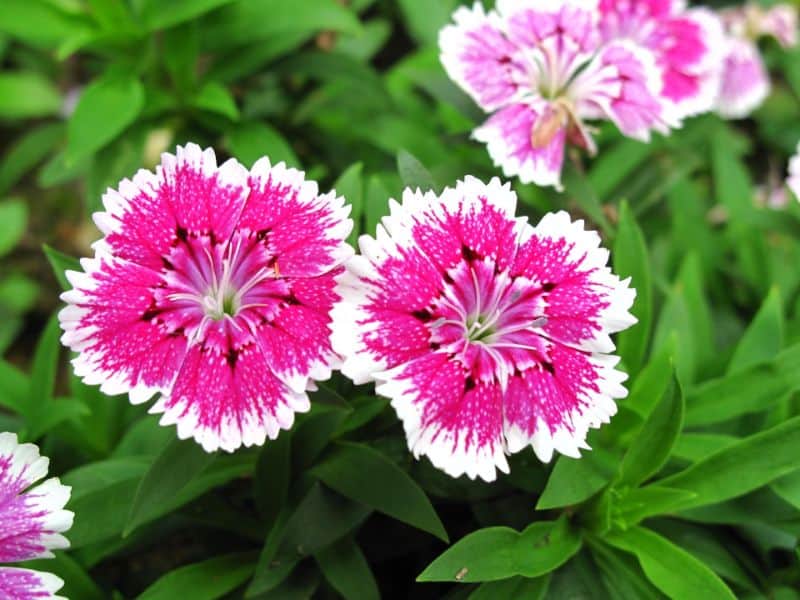
Known for their delightful fragrance and charming blossoms, dianthus—often referred to as pinks—are a fantastic addition to any full sun rock garden. With varieties available in shades of pink, red, and white, these perennial flowers add splashes of vibrant color to stone and gravel landscapes.
The sweet scent of dianthus can evoke memories of childhood gardens; these plants historically symbolize love and admiration. They thrive in well-drained soil, preferring a rocky environment, and they generally bloom from late spring through the summer. If you seek an aesthetically pleasing display combined with sensory delight, dianthus is a plant you can’t overlook.
Thyme
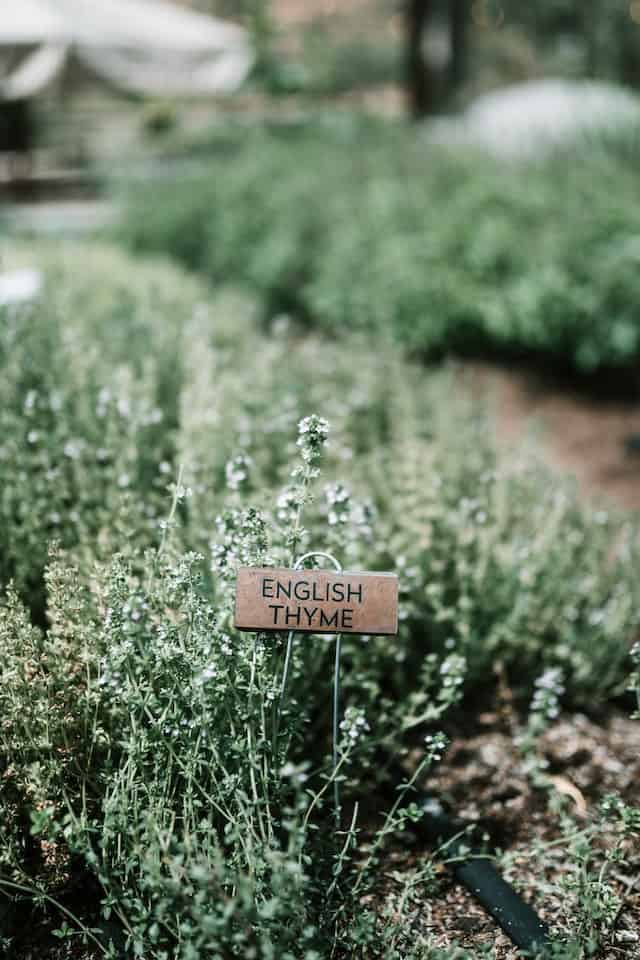
Another exceptional candidate for sunny rock gardens is thyme, particularly in its ornamental varieties. Known for its culinary uses, thyme also offers a remarkable breadth of ornamental traits, including lush foliage and small flowers that attract beneficial pollinators.
Thyme is known for its resilience and tolerance to drought, making it a sturdy partner in your full sun rock garden. Furthermore, its ability to spill over stones gives a casual, relaxed appearance that many gardeners appreciate. Pairing different thyme varieties can create a textured tapestry that is visually stunning while also edible.
Yarrow
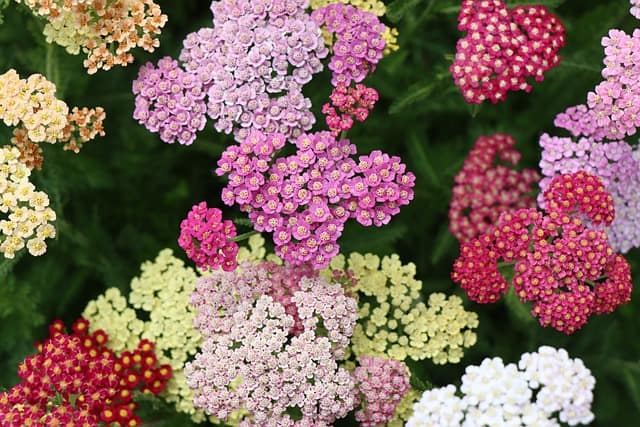
Yarrow, or Achillea millefolium, boasts beautiful clusters of flowers and fern-like foliage that stands tall amidst the rocks. This perennial is not only notable for its vibrant yellow, white, or pink flowers but also for its medicinal properties—often used in herbal teas and for its healing capabilities.
Yarrow thrives in well-drained soil and can tolerate poor fertility, which makes it a perfect match for rock gardens. It’s known for attracting a variety of beneficial insects, including ladybugs and lacewings. When planted in groups, yarrow can create a stunning display while also providing ecological benefits to your garden.
Echinacea
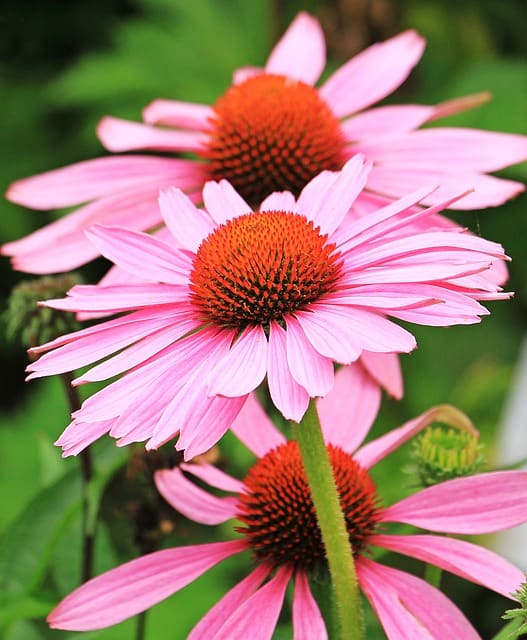
A striking choice for any full sun rock garden, echinacea—commonly known as coneflower—exhibits bold flowers atop sturdy stems. Available in various colors, including traditional purple, white, and even orange varieties, echinacea serves as a fantastic focal point for your sunny landscape.
Thriving in poor, well-drained soil, echinacea is low-maintenance and attracts butterflies and birds, particularly goldfinches, which are fond of the seed heads. Its extended bloom time from mid-summer to fall provides continual color, making it a rewarding addition to the visual tapestry of your garden.
Coreopsis
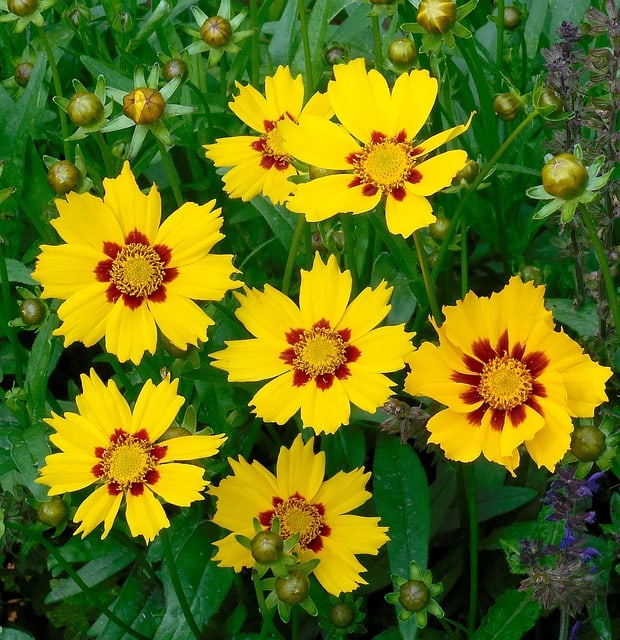
Radiating cheer and vibrancy, coreopsis, or tickseed, makes a joyous addition to your rock garden. With their golden-yellow blooms, these flowers brighten any sunny spot and also extend the growing season with continuous blossoms through the summer months.
Coreopsis is highly adaptable and can thrive in drought-prone areas, which makes it an ideal candidate for full sun gardens. They pair beautifully with other flowering plants and serve as excellent ground covers due to their low profile. Not only are they easy to care for, but the sheer joy they spread with their bright blooms is worth every ounce of care.
Daylily
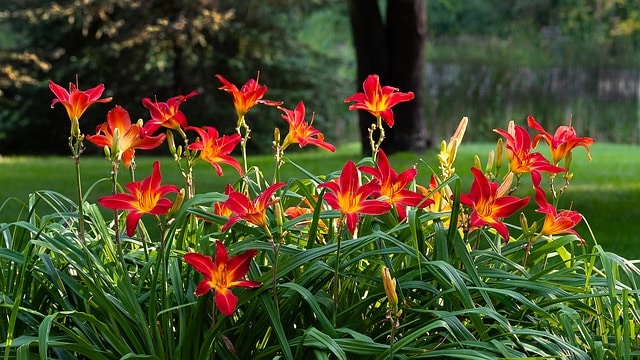
Daylilies are a quintessential rock garden plant, known for their wide array of colors and forms. Each flower lasts only one day, yet numerous blossoms shoot forth continuously throughout the growing season. This unique trait brings an energy and dynamism to gardens, making daylilies a favorite among gardeners.
They thrive in various soil types but particularly love sunny spots, where they can truly flourish. With minimal maintenance and impressive resilience, daylilies blend beautifully with rocky outcrops and native plants, creating a magnificent, flowing effect that can be tailored to any garden theme.
Lamb’s Ear

One of the most textured plants you can incorporate into your rock garden is lamb’s ear (Stachys byzantina). Recognized for its silvery-green and fuzzy leaves, lamb’s ear offers a tactile experience that complements its neighbors in a sunny garden.
While it produces spikes of purple flowers, it’s primarily loved for its foliage, which thrives in full sun and well-drained soil. The soft leaves also attract children and pets alike. With its ability to act as a filler around boulders or as a ground cover, lamb’s ear can soften rocky edges while still maintaining an air of elegance.
Russian Sage
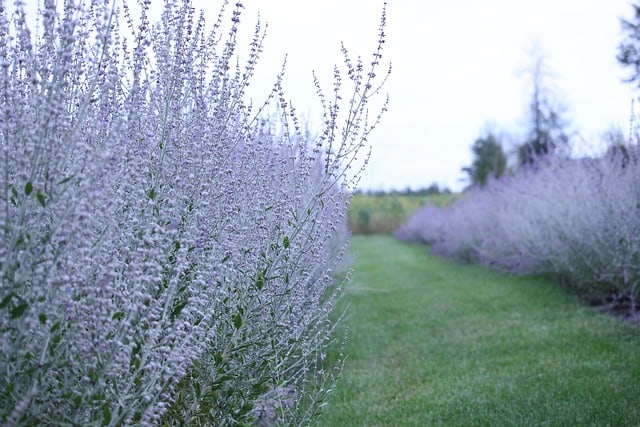
For those looking to add a unique fragrance and height to their rock gardens, russian sage (Perovskia atriplicifolia) is an excellent choice. This perennial boasts feathery, gray-green foliage and tall spikes of lavender-blue flowers that sway gracefully in the breeze.
Russian sage not only captivates with its beauty but also is remarkably drought-resistant. It loves well-drained soil and full sun, adding to its durability in rocky landscapes. Gardeners admire it for being low-maintenance, and its aromatic presence deters some pests, making it a thoughtful inclusion in any garden design.
Catmint
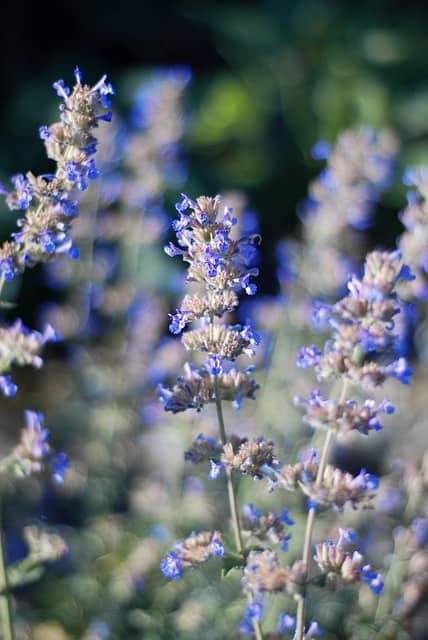
Another perennial to consider is catmint (Nepeta), with its lush lavender blossoms and aromatic leaves. This plant thrives in full sun, extending blooms from spring to fall, ensuring continuous beauty throughout the season.
Catmint has a reputation for attracting pollinators like bees and butterflies while also being deer-resistant. Its aromatic foliage has a pleasant smell, and the way the flowers cascade against rocky backgrounds can create a stunning visual narrative. Besides, it’s a great choice for borders, providing both fragrance and color to your garden.
Bee Balm
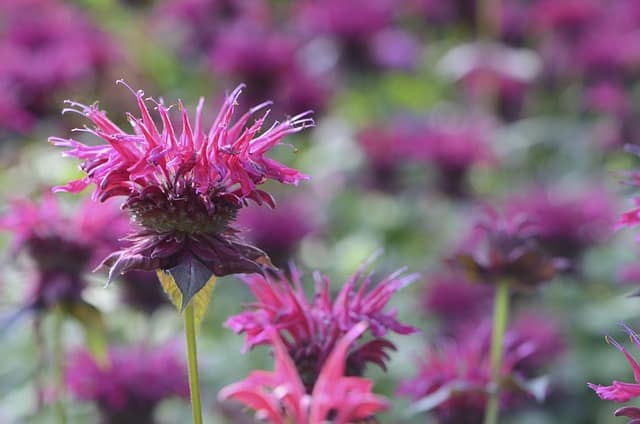
Bee balm (Monarda) is a must-have for a rock garden where pollinators are welcome guests. This plant not only features striking clusters of tubular flowers in vibrant shades of red, pink, or purple but also attracts bees, butterflies, and hummingbirds—an excellent way to enhance your garden’s ecosystem.
Bee balm enjoys full sun and well-drained soil while thriving in the heat of summer. Its aromatic leaves can also be used in teas and flavoring. Being disease-resistant, bee balm can be a stalwart addition to your rock garden, providing both beauty and practical benefits.
Black-Eyed Susan
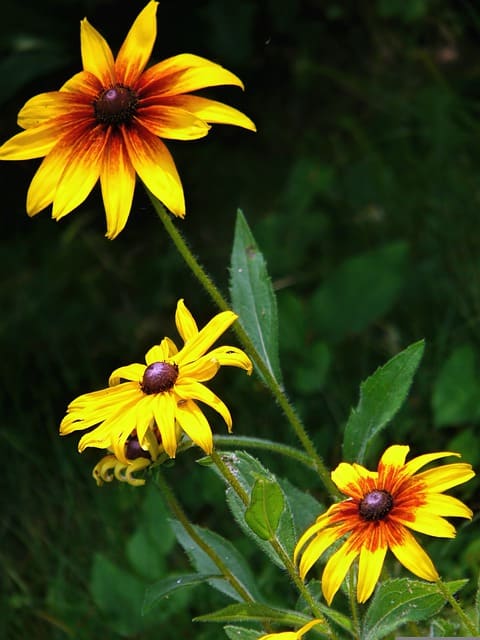
A stalwart of American gardens, black-eyed Susan (Rudbeckia hirta) boasts bright yellow flower petals with dark centers, adding a cheerful touch to your rock collection. Known for its resilience and ability to bloom in late summer, it thrives in full sun and is very low-maintenance.
Black-eyed Susan is valuable not only for its vibrant colors but also for attracting beneficial insects. It pairs beautifully with other flowering plants and can create stunning visual combinations in your rock garden, enhancing the overall landscape with dramatic contrasts.
Sea Thrift
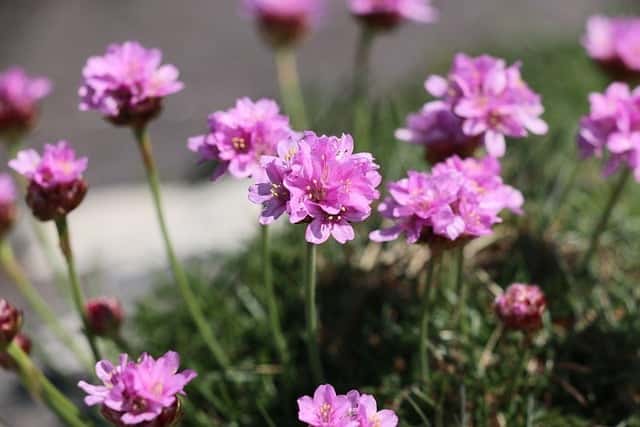
For a unique twist, consider sea thrift (Armeria maritima), a charming perennial with tufts of grass-like foliage and eye-catching pink or white pom-pom flowers. This lovely plant thrives in sandy, rocky soils and is perfect for creating a softer look in your garden while maintaining interest even in dry conditions.
Sea thrift’s ability to withstand harsh conditions is a testament to its resilience, making it a great choice for gardeners in varying climates. This plant works particularly well in crevices or along pathways, offering both color and texture to your rock arrangements.
Ice Plant

If you desire a succulent touch in your rock garden, ice plant (Delosperma) is a fantastic option. With its fleshy leaves and a dazzling array of colorful flowers, ice plant thrives in hot, dry conditions—ideal for full sun exposure.
This plant blooms high above its trailing leaves, creating a visually dynamic effect that brings texture to your space. Beyond its beauty, ice plant is extremely drought-resistant, making it a perfect companion for gardeners looking to create a desert-inspired aesthetic with minimal watering needs.
Salvia
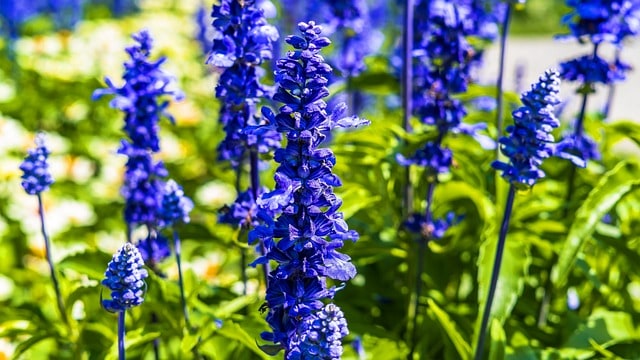
For gardeners craving vibrant colors and adaptable varieties, salvia is a prime candidate. This hardy perennial sees blooms in shades of blue, purple, and red, making it a lively addition to any rock garden fabric.
Salvia thrives in well-drained soil under full sunlight, creating a dazzling display that attracts many pollinators, including hummingbirds. With various salvia species to choose from, gardeners can easily find the right height and colors to enhance their rock garden’s unique character.
Rock Rose
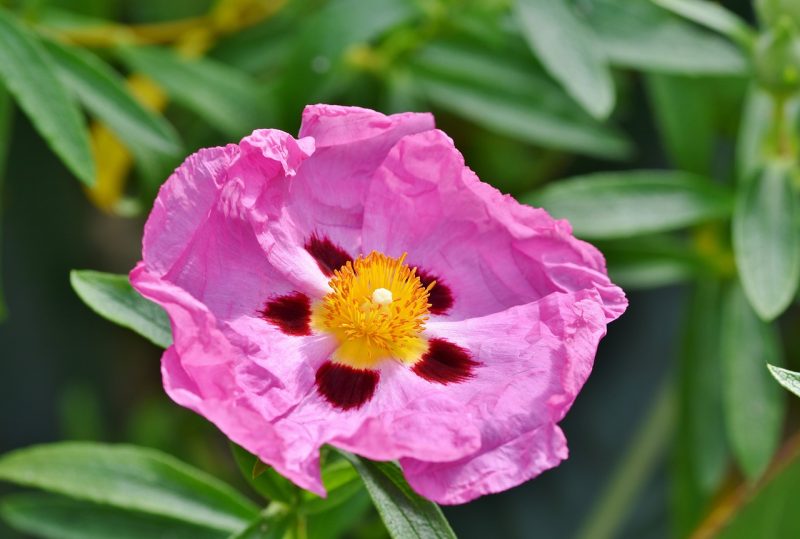
Rock rose (Cistus) is yet another hardy plant that thrives in sunny, rocky conditions. This Mediterranean native is known for its beautiful, crinkled flowers and evergreen foliage, creating a delightful visual throughout the year. Rock rose is particularly tolerant of drought, making it a suitable choice for gardeners aiming for sustainability in their landscaping.
Rock rose’s ability to thrive in poor soils without demanding excessive care makes it an excellent option for creating bold visual contrasts with other sun-loving plants.
Snow-In-Summer
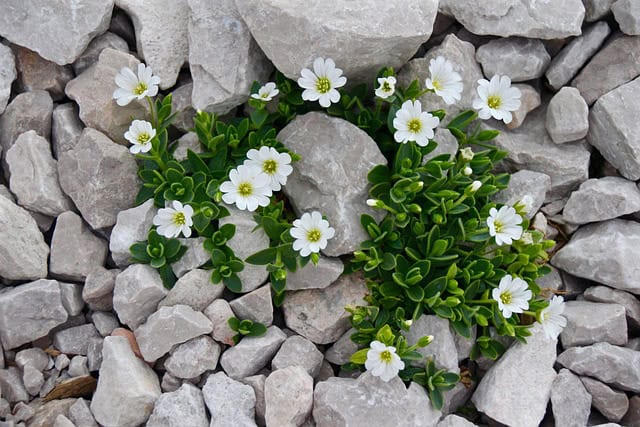
Creating a breathtaking alpine visual in your garden can be achieved with snow-in-summer (Cerastium tomentosum). This fast-growing perennial forms a dense mat of silver-green leaves that become blanketed with white flowers in late spring and early summer, resembling a blanket of snow.
This plant thrives best in full sun and well-drained soils, making it the perfect filler plant among rocks. Its ability to spread quickly and suppress weeds makes it a gardener’s favorite as it offers both aesthetic and practical benefits in the landscape.
Hens and Chicks
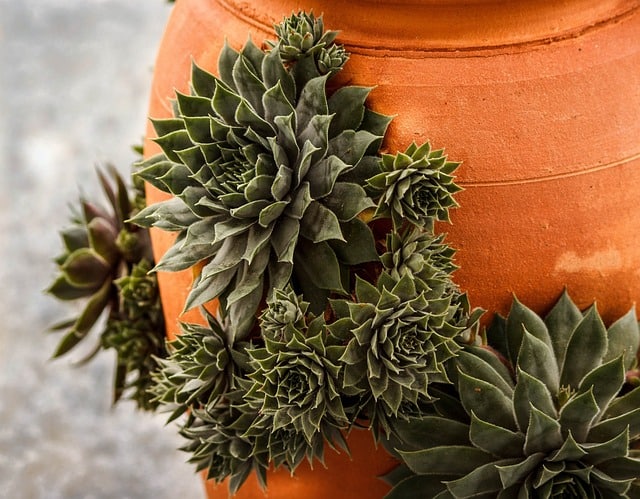
For a quirky and charming addition to your rock garden, consider hens and chicks (Sempervivum)—succulents that thrive in dry, sunny conditions. Known for their rosette shapes, these plants come in various hues, providing an interesting textural contrast to rocks and gravel.
Hens and chicks are resilient and can survive in poor conditions, making them perfect for container gardening as well. Their low-growing habit allows them to spill gracefully over edges, adding visual interest to your sun-drenched garden.
Penstemon
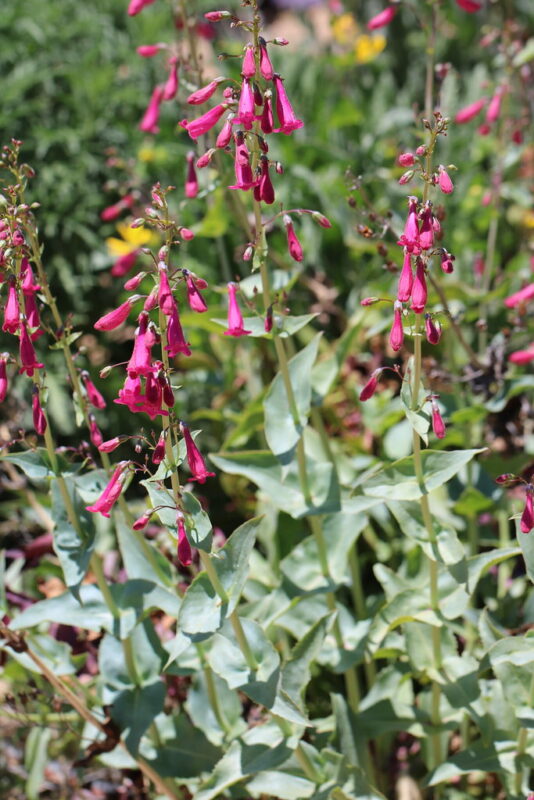
Penstemon, or beardtongue, is a wonderful addition that brings colorful trumpet-shaped flowers to your rock garden. These perennial plants come in a range of colors and attract hummingbirds, making them a lively choice for any sunny space.
Penstemon tolerates a variety of soil types, thriving particularly well in well-drained, sandy conditions. Their tall flower spikes create a striking presence amidst lower-growing plants, adding depth and dimension to your garden.
Gaura (Oenothera)
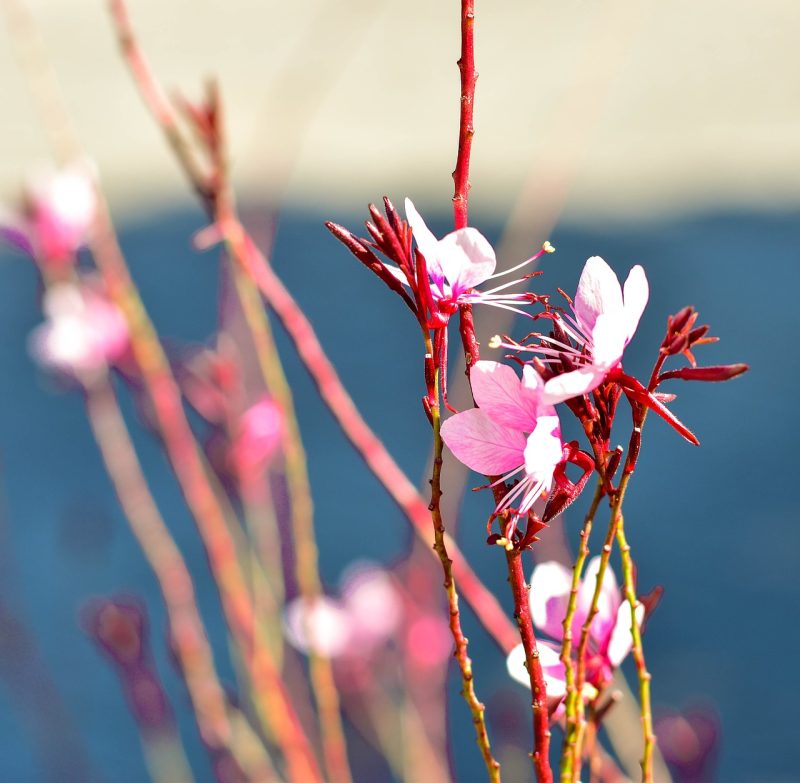
Lastly, we have gaura (Oenothera), a perennial whose star-like flowers bloom in delicate white or pink hues. This plant adds a graceful elegance to full sun rock gardens as it sways gently in the breeze, creating a cloud-like effect amidst its surroundings.
Gaura tolerates heat and drought, making it highly adaptable. Its long blooming period from late spring to fall ensures that vibrant colors grace your garden for months on end.


